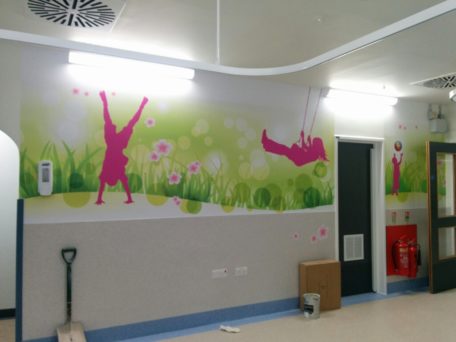
Staying in hospital isn’t a normal part of growing up but for some children it’s necessary to help them recover from illness. Even so, it doesn’t mean they should miss out on other parts of their childhood like having the opportunity to play. Being able to participate in play activities contributes to their happiness, something that’s integral to their wellbeing, and is an important part of their social and emotional development too.
Hospital playrooms give children a place to concentrate on just being children rather than patients. They also become dedicated places for them to engage in play therapy with health play specialists, helping them deal with the emotional stress of being unwell and not being able to go home. We often work with play specialists when we design hospital playrooms to make sure they’ll benefit children in the right way and support them in their roles.
Often one of the first things we’re asked to address when designing playrooms is storage. Having every available toy on display can overstimulate children as they rush to try and play with everything in quick succession. When coupled with the clutter and ensuing chaos, this can make the job of health play specialists much harder. By using specially designed storage solutions, we’re able to keep playrooms tidier, helping to ensure children aren’t overexcited after being greeted by a wall of toys and giving play specialists a better working environment to guide them through therapeutic play.

Another common cause of stress and overstimulation in children is the vivid primary colours that are often used to make wards more inviting. Whilst this is done with the best of intentions, intense colours can act as visual stressors; red, for example, is commonly associated with negative feelings like anger and danger.
We replace these bright hues with more muted tones and calming colours like greens and blues that help patients to relax and enjoy their play sessions.
Colour and image psychology is an important consideration when we choose Wall Art for play areas too. As well as using scenic images to give young patients something other than treatment to focus on, we also try and use more abstract images to brighten rooms and make them less memorable. Using an image of a beach, for example, may bring to mind happy memories on family holidays but we don’t want future trips to the seaside to remind them of the time spent in hospital.
One of our favourite playroom transformations was Nottingham Children’s Hospital. We were asked to create a recreational space that allowed children to continue an element of their everyday lives despite facing long stays in hospital and tough treatment regimes.
Consulting with play specialists throughout the design process was essential and helped us to create an environment that supported them in their role of engaging children in play therapy.
The result was a carefully considered space that gave children a respite from the reality of being stuck in hospital, allowing them to experience a sense of normality. It also became a dedicated area for health play specialists to help young patients deal with their situation emotionally and provide them with a healthy outlet for their thoughts and feelings.
